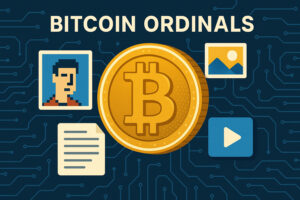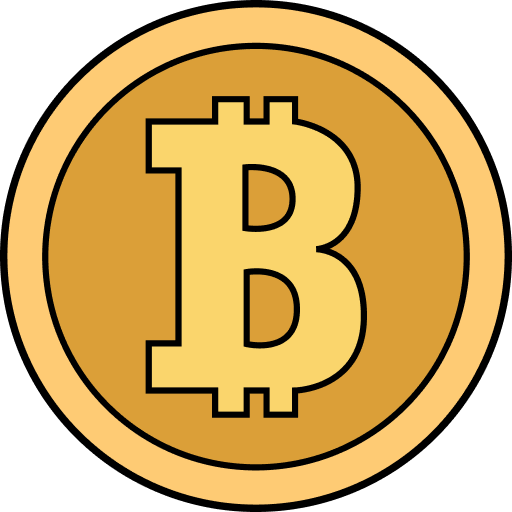Introduction
Bitcoin ordinals is a process of identifying and attaching data to specific satoshis, the lowest denomination of Bitcoin. It enables the embedding of items like images, video clips, or text directly into the Bitcoin blockchain. The process has become popular for bringing non-fungible token (NFT-like) assets into the world of Bitcoin, which has not natively supported smart contract functionality like that of Ethereum.
Read on as we detail the explanation of what ordinals are, how the system works, and how it has generated both excitement and controversy within the world of Bitcoin.

Images, videos, and text inscribed onto individual satoshis.
What Are Bitcoin Ordinals?
Bitcoin ordinals is a system of numbering individual satoshis according to their sequence of mining and transaction history. Given that each Bitcoin is composed of 100,000,000 satoshis and there is a fixed supply of 21 million Bitcoins, there are a total of 2.1 quadrillion satoshis. Ordinals assign each of these units a unique position or “number” according to the sequence in which they are mined.
Ordinals gained popularity with wider talk after the implementation of the Taproot as an upgrade in November 2021. Taproot enhanced scripting on Bitcoin and the efficiency of using data. It enabled the attachment of arbitrary data on satoshis in a manner that does not breach network rules or compromise safety.
By attributing a distinct identity to every satoshi, developers have the capacity to develop digital objects – such as NFTs – explicitly on the Bitcoin blockchain, rather than using sidechains or third-party layers.
The Technology Behind Ordinals
The infrastructure supporting Bitcoin ordinals is constructed on the basis of existing infrastructure for Bitcoin. It does not make any changes in consensus rules nor does it demand proprietary smart contracts. It utilizes:
- Each satoshi is numbered in an ordering based on when it is mined.
- Inscription: It is the process of putting information into a transaction that is written into the blockchain.
- Taproot scripts: These enable users to embed information into a transaction in a low-impact, efficient manner.
The true content – like an image or message – is contained within a witness script in a Taproot transaction. Once confirmed, the information is stored within the blockchain indefinitely.
To access ordinals, users usually employ a specialized software or a supported wallet for reading and dealing with inscribed satoshis. Some of the most popular ones are the Ordinals protocol by Casey Rodarmor, which streamlines the process of registering, inscribing, and keeping track of ordinals.
History and Development
The concept of tracing individual satoshis has long been around within the world of Bitcoin but gained significant ground in 2023 when Casey Rodarmor created the Ordinals protocol. His framework offered a method of identifying satoshis and inscribing them with information, paving the way for a new type of on-chain digital artifact.
The Ordinals launch triggered a flood of experimentation. Users started encoding pixel art, GIFs, text data, and even full video games into satoshis. It was a digital art form for some. It was a test of whether Bitcoin is capable of carrying non-monetary information for others.
The number of ordinal inscriptions has reached more than 50 million as of early 2025, with interest remaining high in utilizing Bitcoin for uses aside from peer-to-peer payments.
Use Cases and Digital Artifacts
The most prevalent application of Bitcoin ordinals is the creation of NFT-like objects natively on the Bitcoin blockchain. They are occasionally referred to as digital artifacts because they differ from Ethereum-style NFTs that tend to rely on centralized metadata and smart contract dependencies.
Some practical uses of Bitcoin ordinals are:
- Collectibles and art: Artists create unique images or animation as inscriptions.
- Text-based messaging: Users write poetry, manifestos, political statements.
- Games and micro-apps: A few developers have even included interactive demos or even playable code.
The difference ordinals have with regard to classical NFTs is that all of it – the contents and the ownership – is kept on-chain. There is no necessity of fetching metadata from an IPFS node or a server. It further contributes towards the persistence and censorship-resistance of the ordinal artifacts.
Wallets and Marketplaces
To see or exchange ordinals, people require matching platforms and wallets. Ordinal-compatible wallets differ from regular Bitcoin wallets in that they need to monitor individual satoshis and maintain ordering.
Some well-known tools include:
- Ordinals Wallet: A web-based digital wallet with inscription and transfer functionalities.
- Hiro Wallet (testnet fork): Has minimal ordinal support on test networks.
- Xverse Wallet: Provides Ordinals features built on top of base Bitcoin capabilities.
In marketplaces, there have already appeared early platforms that facilitate inscription sales and auctions:
- Magic Eden (Bitcoin section): A multi-chain marketplace for NFTs with support for Bitcoin ordinals.
- Gamma.io: A platform that enables artists and users alike to discover and create ordinal inscriptions.
- Ordinals.market: One of the earliest natively built Bitcoin ordinal trading platforms.
These marketplaces exhibit ordinance NFTs like Ethereum counterparts but have a backend which is fully based on Bitcoin’s blockchain and the scripting of Taproot.
Controversy and Criticism
In spite of the popularity of ordinals, they’ve also caused controversy among the Bitcoin people. Critics contend that inscriptions make the blockchain bulky, take up block space, and deviate from the original intent for Bitcoin as a currency network.
Key criticisms include:
- Increase of blockchain size: Having large files on-chain directly increases the growth of the blockchain.
- Miner incentives: Some people argue that the ordinal inscriptions temporarily raise miner fees but potentially cause long-term problems.
- Ideological rift: Purists among them regard ordinals as an abuse of the chain, but others have an open access and experimentation belief system.
On the contrary, advocates contend that ordinal inscriptions:
- Are valid according to current consensus rules.
- Increase miner revenue, particularly in off-peak market periods.
- Make Bitcoin more relatable and culturally significant.
The destiny of ordinals is finally reliant on software development, wider user acceptance, and support from the community.
Relationship with Taproot and SegWit
Ordinals would not have been feasible without Taproot that provided an easier way of adding arbitrary data into transactions without bloating the input/output structure. Such concepts prior to Taproot would have taken up more space or else possibly breached standardness requirements.
SegWit acts as well by splitting witness data, enabling greater inscriptions within the transaction format. These combined upgrades make ordinal inscriptions technologically viable in a way that does not add new rules but does not break any current ones.
The concept has provided a way of innovation that does not require forks or changes in protocol. It also shows how efficiency-improving changes to Bitcoin have the potential to unlock novel uses.
The Cultural Impact
Beyond the technical significance, Bitcoin ordinals are beginning to make a cultural impact. Artists and collectors and archivists are using these ordinal inscriptions as a means of embedding fragments of history or art on the most secure blockchain.
Occurrences such as “First 10k Inscribed” collections have entered into ordinal lore. Some of the initial inscriptions sold for substantial amounts on marketplaces due to their uniqueness and timeliness.
Even the most vehement Bitcoins maximalists once waved them off as hype but are revisiting their opinion with digital artifacts no longer persisting on smart contract-based platforms but on Bitcoins.
Conclusion
Bitcoin ordinals have presented a new approach towards how we engage with the Bitcoin blockchain by adding significance and message to individual satoshis. The system combines the cultural pull of NFTs with the security and endurance of the infrastructure of Bitcoin. Though not controversy-free, ordinals have appealed to builders, creators, and collectors that envision possibilities of using Bitcoin as more than currency.
Courtesy of Taproot and SegWit, such a movement is possible without breaking fundamental protocol rules. As the technology develops further and new use cases and tools appear, Bitcoin ordinals will continue to redefine how one views value, property, and expression on the blockchain.














 Twitter
Twitter
 Telegram
Telegram
